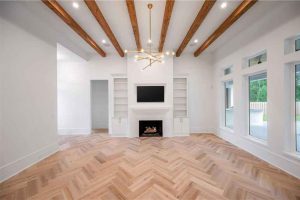Lower Rates Bring Hope to the New Orleans Housing Market
After years of battling high mortgage rates and surging property insurance costs, the New Orleans-area housing market may finally be turning a corner.
“I feel like we’re coming out of the rough spot now,” said Jamie Hughes, a Realtor with Reve Realtors in New Orleans.
According to the New Orleans Metropolitan Association of Realtors, home sales in August rose across Orleans, Jefferson, and St. Tammany parishes compared to the same time last year. The data comes just as the Federal Reserve recently cut its benchmark interest rate — a move that could help more buyers re-enter the market if mortgage rates continue to fall from their current level of around 6%.
“If we go under 6%, I think that will bring a lot more buyers back,” Hughes said. “There were many sitting on the sidelines for the past couple of years for various reasons.”
Buyers Cautiously Return
While additional rate cuts are expected in the coming months, Hughes warns against waiting too long to make a move.
“The time to buy is whenever you find the right house you can afford,” she said. “You can always refinance, but when rates get lower, competition gets higher — and you may not get the house you had your eye on.”
Her message reflects a growing sentiment among real estate professionals: that timing the market rarely pays off. For buyers who can manage current rates, the recent dip may offer an early advantage before renewed demand drives up prices again.
Broader Economic Ripples
The effects of falling rates stretch beyond residential real estate. Jim Spiro, managing director with Morgan Stanley in New Orleans, said local businesses and consumers alike could benefit.
“Businesses should benefit nicely because they’re constantly borrowing money and trying to grow, expand, or hire new people,” Spiro said.
Cheaper borrowing costs can encourage investment, hiring, and consumer spending — all key components of a healthier regional economy.
Population Challenges Persist
Still, lower rates alone won’t fix the deeper issues weighing on the local housing market. Ken Johnson, a real estate economist and professor at the University of Mississippi, said the metro area faces one of the toughest market environments in the country.
“There’s just not enough demand,” Johnson explained. “As your population either slowly grows or declines — and New Orleans is slightly declining right now — you start to have vacant houses, which become blighted houses. It’s like throwing gas on a fire at that point.”
Johnson, who has studied housing and rental trends across the region, believes stabilizing the market will require more than interest rate relief. “That decline in population means you lose demand for housing,” he said, noting that a shrinking base of residents limits long-term recovery potential.
Looking Ahead
Despite structural headwinds, the recent uptick in home sales and the Fed’s rate cut have injected a cautious optimism into the market. For realtors like Hughes, even modest improvements are a welcome shift after two sluggish years.
Whether this rebound strengthens or fades will depend on how far rates fall — and whether the region can retain and attract residents to sustain demand. For now, at least, the signs point toward a slow but hopeful recovery in the Crescent City’s housing scene.




